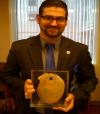Brief Answer:
Emphasize on the risk of infection
Detailed Answer:
Dear patient,
Thanks for your query. The biggest risk of a persistent, unrepaired CSF leak is that of communication between an external contaminated surface with the sterile
central nervous system, resulting in infection (eg.
meningitis). There is reasonable literature to support this (see citation and abstract below):
Neurosurg Focus. 2003 Dec 15;15(6):E6.
Spinal pseudomeningoceles and
cerebrospinal fluid fistulas.
Couture D1, Branch CL Jr.
Author information 1Department of Neurosurgery, Wake Forest University School of Medicine, Winston-Salem, North XXXXXXX 27157-1029, USA.
Abstract
Spinal pseudomeningoceles and cerebrospinal fluid (CSF) fistulas are rare extradural collections of CSF that result following a breach in the dural-arachnoid layer. They may occur due to an incidental durotomy, during intradural surgery, or from trauma or congenital abnormality. The majority are iatrogenic and occur in the posterior lumbar region following surgery. Although they are often asymptomatic, they may cause low-back pain, headaches, and even
nerve root entrapment. Leakage of CSF from the wound may cause a fistulous tract, which is a conduit for infection and should be repaired immediately. Diagnosis can be confirmed on clinical examination or imaging studies including
magnetic resonance imaging, computerized tomography
myelography, and
radionuclide myelography. Treatment must be specific to each patient because the timing, size, symptoms, and location of the dural breach all affect the choice of therapy. Nonsurgical methods may be used, but more frequently operative repair is required. In this article, the authors review the diagnosis and treatment of spinal pseudomeningoceles and CSF fistulas.
Hope this helps, wish you the best,
Dr Brenes-Salazar MD
Mayo Clinic MN

 Mon, 24 Mar 2014
Answered on
Mon, 24 Mar 2014
Answered on
 Mon, 14 Apr 2014
Last reviewed on
Mon, 14 Apr 2014
Last reviewed on




